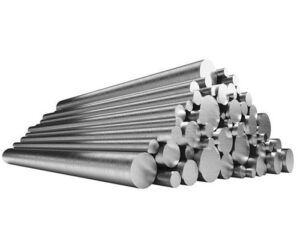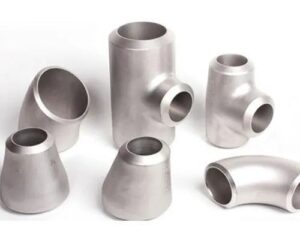Hastelloy C4 vs Hastelloy C276
Both Hastelloy C4 and C276 offer excellent corrosion resistance and are commonly used in the chemical, oil, and marine sectors. However, they have differences in chemical composition, corrosion resistance, stress corrosion cracking resistance, and specific applications.
We specialize in the production of Hastelloy C4 and Hastelloy C276, with products available in various forms, such as seamless pipes, welded pipes, plates, bars, forgings, flanges, and rings, all in accordance with international standards. Feel free to reach out if you have any requirements. Let’s now take a look at the detailed comparison of the two products.
Introduction to Hastelloy C4 vs Hastelloy C276
Hastelloy C-276 (10276) is a nickel-based corrosion-resistant alloy, composed of approximately 57% nickel, 15–17% molybdenum, 14.5–16.5% chromium, 4–7% iron, and 3–4.5% tungsten. It provides superior corrosion resistance, effectively withstanding oxidation, non-oxidizing acids, and chloride corrosion, making it especially suitable for extreme applications, such as chemical processing, pollution control, wastewater treatment, pulp and paper production, and equipment in sulfur gas oilfields. It is also suitable for marine environments where there is a risk of crevice corrosion.
Hastelloy C-4 (N06455) is a low-carbon nickel-molybdenum-chromium alloy, mainly composed of about 65% nickel, 14–18% chromium, 14–17% molybdenum, and 0.7–1.2% titanium, with small amounts of iron, manganese, and silicon. It offers excellent heat stability and resistance to intergranular corrosion, making it ideal for high-temperature, corrosion-resistant applications such as in chemical and petroleum refining (e.g., reactors, heat exchangers, pipelines), flue gas desulfurization, marine engineering, and pharmaceutical equipment.
Chemical Composition of Hastelloy C4 vs C276
According to the table below, Hastelloy C4 has a lower iron content, making it more suitable for applications that require heat stability and resistance to intergranular corrosion. In contrast, Hastelloy C276 contains higher amounts of molybdenum and tungsten, which enhance its resistance to pitting, crevice corrosion, and other extreme corrosive environments, making it better suited for harsher conditions.
| Element | Hastelloy C4 (%) | Hastelloy C276 (%) |
| Carbon (C) | ≤0.01 | ≤0.01 |
| Manganese (Mn) | ≤1.0 | ≤1.00 |
| Phosphorus (P) | ≤0.02 | ≤0.04 |
| Sulfur (S) | ≤0.03 | ≤0.03 |
| Silicon (Si) | ≤0.08 | ≤0.08 |
| Chromium (Cr) | 14.0 – 18.0 | 14.5 – 16.5 |
| Nickel (Ni) | Remainder (Rem) | Remainder (Rem) |
| Molybdenum (Mo) | 14.0 – 17.0 | 15.0 – 17.0 |
| Cobalt (Co) | ≤2.5 | ≤2.5 |
| Iron (Fe) | ≤3.0 | 4.0 – 7.0 |
| Tungsten (W) | – | 3.0 – 4.5 |
| Vanadium (V) | ≤0.10 | ≤0.35 |
Physical Properties of Hastelloy C4 vs C276
As shown in the table below, Hastelloy C276 has a slightly higher density than Hastelloy C4, making it more suitable for applications requiring higher weight and strength. While C4 has a slightly higher melting point, providing better performance in extremely high-temperature conditions. Therefore, C4 is more stable in extreme heat and requires equipment capable of handling higher temperatures.
| Property | Hastelloy C4 | Hastelloy C276 |
| Density (g/cm³) | 8.64 | 8.89 |
| Melting Point (℃) | 1350 – 1400 | 1350 – 1390 |
Mechanical Properties of Hastelloy C4 vs C276
As can be seen from the following table, Hastelloy C4 has a higher yield strength than Hastelloy C276, which means it can withstand greater force before deformation.
| Element | Tensile Strength | Yield Strength (0.2%Offset) | Elongation |
| Hastelloy C4 | MPa – 783 | MPa – 365 | 55% |
| Hastelloy C276 | Psi – 52,000 , MPa – 355 | Psi – 1,15,000 , MPa – 790 | 40 % |
Corrosion Resistance of Hastelloy C4 vs C276
Hastelloy C4 shows outstanding performance in high-temperature environments, especially in oxidizing media. It has excellent resistance to high-temperature corrosion, making it suitable for high-temperature and strong acid environments. Although C4 has slightly lower resistance to pitting and crevice corrosion than C276, it still shows outstanding corrosion resistance in high-temperature and acidic environments, especially in preventing intergranular corrosion.
Hastelloy C276 shows excellent corrosion resistance in various harsh conditions, particularly in acidic and oxidizing environments. The tungsten (W) in C276 helps it resist pitting and crevice corrosion better, especially in chlorides and oxidizing acids, providing stronger protection for severe corrosion conditions.
Features of Hastelloy C4 vs C276
Hastelloy C-4:
- Excellent corrosion resistance to most corrosive media, especially in reducing conditions.
- Outstanding resistance to localized corrosion in halides.
Hastelloy C-276:
- Superior corrosion resistance to most corrosive media in both oxidizing and reducing conditions.
- Excellent resistance to pitting corrosion, crevice corrosion, and stress corrosion cracking.
Application of Hastelloy C4 vs C276
Hastelloy C4 features outstanding corrosion resistance and thermal stability, finding broad applications in most chemical fields and high-temperature settings. Typical applications include:
- Flue gas desulfurization systems
- Acid pickling and acid regeneration facilities
- Acetic acid and agrochemicals production
- Titanium dioxide production via the chloride process
- Electrolytic plating
Hastelloy C276 is popular in chemical, pharmaceutical, and aerospace industries because of its excellent corrosion resistance and thermal stability. In chemicals, it is used to manufacture equipment like reactors, storage tanks, and heat exchangers. In pharmaceuticals, C276 is used in making reactors, towers, and other equipment. Furthermore, Hastelloy C276 is commonly used in the aerospace industry. it’s used to make aircraft components and engine parts for extreme conditions. Its strength and rigidity also make it an essential material for manufacturing aircraft exteriors.
Cost of Hastelloy C4 vs C276
The main difference in cost between Hastelloy C4 and C276 lies in their chemical compositions and manufacturing requirements. Hastelloy C4 has a lower carbon content and relatively simpler manufacturing requirements, so it is generally cheaper than Hastelloy C276.
C276 has more molybdenum and iron to increase its resistance in harsh environments, and because its manufacturing is more complex, it is usually more expensive than C4. As high-performance nickel alloys, C4 and C276 are considerably more expensive than typical stainless steel or carbon steel. The cost can change depending on market prices and the volume purchased.
Choosing the Better One: Hastelloy C4 vs C276
When choosing between Hastelloy C276 and C4, several factors need to be considered such as the type of corrosive media, temperature range, weldability, and corrosion resistance. C276 is best for dealing with harsh and complex corrosive conditions, especially where both oxidation and reduction are involved.
C4 has excellent high-temperature stability and resistance to intergranular corrosion, making it especially suitable for equipment that runs at high temperatures for long periods or requires frequent welding. Both grades have excellent properties, but they differ in some key areas. The choice should depend on the actual application needs. Choosing the right material will guarantee the best corrosion resistance, cost-efficiency, and durability.
Your Reliable Hastelloy C4 and C276 Supplier
We focuse on the research, development and manufacturing of high-temperature and corrosion-resistant alloys, providing customized, reliable, and high-performance material solutions to customers around the world. “Our main products include Hastelloy C276, Hastelloy C4, and Inconel alloys in various forms such as seamless pipes, welded pipes, plates, bars, forgings, flanges, rings, steel strips, wires, and welding materials.
We offer products in various standards such as GB, ASTM, ASME, DIN, JIS, and support custom production based on drawings. And we have been certified by recognized authorities. We offer stable supply and quick delivery to meet the high-performance material demands of critical projects. For any inquiries or needs, feel free to contact us anytime.
Latest News
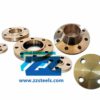 02 8 月 2019Copper Nickel Flanges UNS C70600Zizi offers ISO certified copper nickel flanges, stores large quantity of Cu-Ni 90/10 weld neck flan...
02 8 月 2019Copper Nickel Flanges UNS C70600Zizi offers ISO certified copper nickel flanges, stores large quantity of Cu-Ni 90/10 weld neck flan... 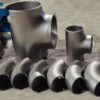 29 7 月 2019Stainless Steel Buttweld Fittings ManufacturerZizi is stainless steel buttweld fittings manufacturer, we offer stainless steel pipe elbow, tee, ca...
29 7 月 2019Stainless Steel Buttweld Fittings ManufacturerZizi is stainless steel buttweld fittings manufacturer, we offer stainless steel pipe elbow, tee, ca... 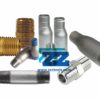 19 7 月 2019Steel Pipe Nipple Types, Dimensions and MaterialsBasic pattern of steel pipe nipple is a short piece of pipe with threads at both end or at one end....
19 7 月 2019Steel Pipe Nipple Types, Dimensions and MaterialsBasic pattern of steel pipe nipple is a short piece of pipe with threads at both end or at one end....

